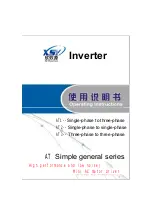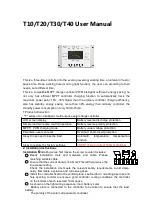
AF9ZP0BA - EPS-ACW REACH TRUCK - User Manual
Page - 49/90
IMAX+INC FREQ1. (Meantime the direct current will be limited by the full
motor voltage). Factory adjusted.
13) INC FREQ2
When the frequency in the steering motor is FREQMAX FOR IMAX + INC
FREQ1+INC FREQ2, the quadrature current is limited to IQMAX2 below.
Factory adjusted.
14) IQMAX2
Maximum quadrature current at a motor frequency of FREQMAX FOR
IMAX+INC FREQ1+INC FREQ2. (Meantime the direct current will be limited
by the full motor voltage). Factory adjusted
15) MAXIMUM CURRENT
Imax can be limited lower equal than the absolute maximum current (70Arms)
with this parameter.
16) CAN BUS
This setting enables the CAN bus communication with the traction controller.
In case it is set ABSENT, at the next key on, the steering system turns at rest
as soon as the stepper motor is released and the dynamic numbness vs. trac
speed is disabled.
17) MAIN CONTACTOR
In case the Main Contactor make and take the +B to the epsacw, it must be
set ON (default value). In case the epsacw is directly connected to the
battery terminal (+B), it must be set OFF.
18) DEBUG MODE
This adjustment enables the debug frames to be released on the CAN BUS
communication system. Zapi reserved.
19) HARDWARE VERSION
This is just an evidence of the HW release is aboard. This is protected
against being written.
20) CONSOLE
This adjustment enables/disable the communication with the Zapi hand set.
21) AUX SPEED #1
This adjustment sets the max steering motor speed in hertz.
22) SELFCHK STATUS
This option enables a selfchecking routine to test the motor and power drives
(selfcheck#1) or the encoder and trasmission (selfcheck#2).
-
1:
At the next key on, an alarm SELFCHECK #1 occurs and
a selftest routine is raised to check the functionality of the
motor and power drives. A fixed 14.7Adc current is
injected and measured and the resistances at the motor
terminals are measured. The results of the selfcheck #1
are shown real time in the TESTER menu reading
STATUS #1.
-
2:
At the next key on, an alarm SELFCHECK #2 occurs and
a selftest routine is raised to check the functionality of the
















































